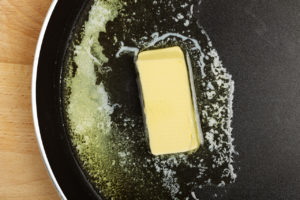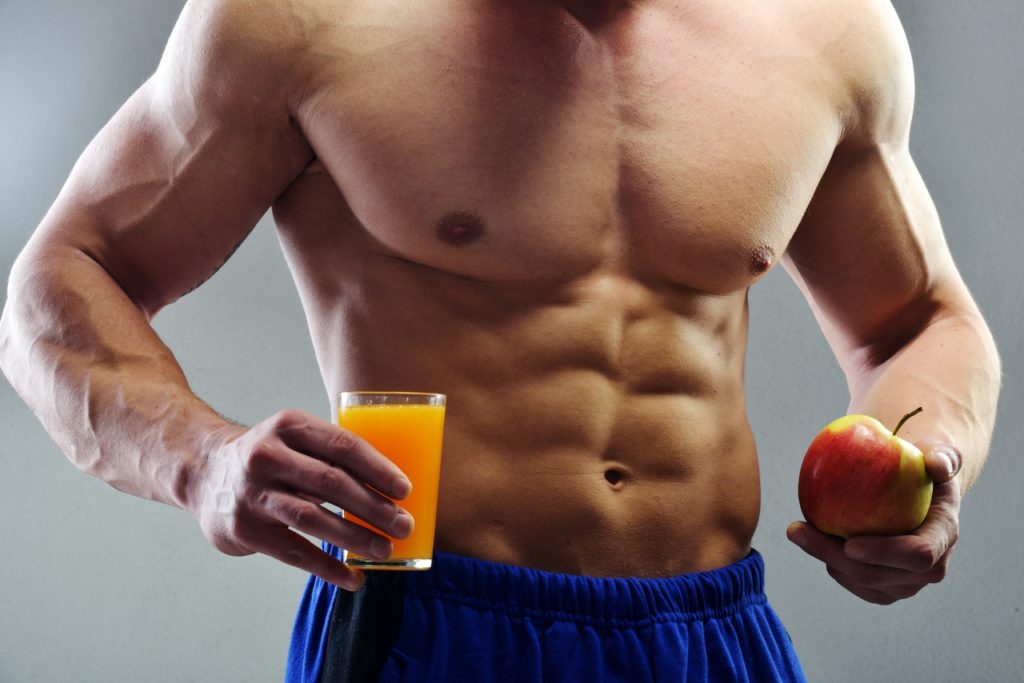It’s a debate that’s raged since the first weight was lifted and (probably) won’t ever end until a meteor instantly wipes us from history.
It’s also a question I have been asked by almost every single client I have ever worked with.
And in today’s world where people are drowning in fitness information, but starving for results, the truth is often difficult to unmask. The question?
Should you train fasted or fed?
The answer I always give?
“It depends”
It depends on your goals. It depends on your training history and current diet. But most importantly, it depends on you, your life, and ultimately whats works for you; because training fasted (or fed) is just another tool in your arsenal. It’s not your entire arsenal.
Success comes from consistency. Not whether you have food in your stomach while doing drop sets in short shorts. That being said, its important to know whether this unique tool, is right for you.
Personally, I train fasted 85% of the time. I really do enjoy it and it works with my life.
Also my mom trained fasted while I was on the womb (then downed cheese biscuits post workout, obviously explaining my never ending quest for the perfect pizza) which makes me subconsciously feel like I have an obligation to follow in her footsteps.
That being said, many of my clients, friends and coaches, do not train fasted. They throw back a mammoth sized meal, then hit the gym hard. And they swear by its efficacy.
So with both sides religiously believing (and proving) they are correct, who are we to follow? Furthermore, which style is right for you, your life and your goals? In this article, the fasted vs fed training war comes to an end. But first, let’s start with the basics.
The magical properties of insulin
Let’s first get clear what fasted training is. Obviously it’s training (with weights, cardio etc.) in a “fasted” state. A fasted state then, is when your insulin levels are low or at baseline, making fat the primary source of energy for your activities.
When we eat food, our bodies release insulin to manage the incoming nutrients into your blood stream. The bigger the meal, the bigger the insulin response and the longer it takes to return to baseline (fasted) levels.
Thus, the ideal fasted training time is in the morning before breakfast (since your last meal was usually 7+ hours ago). Yes, I am aware that waking up and getting to the gym can be a real pain in the ass for some. It’s usually dark, cold and you are leaving the safe warm wonderland known as your bed to play with pieces of cold steel.
So why even consider fasted training then?
Because it “accelerates” fat loss; primarily stubborn fat. Yes stubborn fat is a real thing.
In males it’s usually the lower belly and in girls it’s found the hips and thighs. The reason it’s stubborn is because those body parts receive less blood flow. This makes it less likely your body will pull from those fat stores to burn up as energy (they would rather pull from fat stores that have a lot of blood flow such as your arms, neck or upper body.)
Thankfully fasted training provides a unique hormonal response that combats that inconvenience.
But before we jump into that let’s make one thing clear: fasted training does not allow you to cheat the laws of thermodynamics. If you’re not a calorie deficit, no amount of fasted training is going to help you get leaner.
Melt fat like butter in a microwave

Research shows that exercising with your insulin levels at baseline levels, burns more fat than exercising when insulin levels are higher (1). This is because insulin blunts the breakdown of fat cells for energy (lipolysis) and fat oxidation (fat burning).
Furthermore when you train in a fasted state, your body releases catecholamines (adrenaline) which help you melt stubborn fat like butter in a microwave, give you energy and protect against muscle wasting.
Another great benefit is that in a fasted state, blood flow to the abdominal region ( and the hip/thigh area in females) is increased (ever get cold fingers or toes in the morning before breakfast? All that blood is pooling into core of your body.) The additional catecholamines in the blood stream (as a result of fasted training) combined with the blood flow, help burn that stubborn body fat.
It’s time to get sensitive
Something that’s not often mentioned is insulin sensitivity. Basically, it tells us how efficiently your body uses insulin to deposit a set amount glucose. If you are insulin sensitive, your body requires little insulin to partition the nutrients.
If you are insulin resistant, you need lots of insulin to shuttle the same amount of glucose out of your bloodstream. The more resistant you become, the more likely you are to develop type II diabetes (yikes!).
Fasted training is superior to its counterpart, fed training, in making you more sensitive to an insulin response. This helps you manage your food intake better and making sure that food is used to build muscle, not fat (unfortunately, no studies prove it makes you more sensitive emotionally… yet.)
Furthermore, fasted training has been shown to enhance a variety of biomarkers including GLUT4, VO2 max and general body composition (2)(3).
Accelerated muscle breakdown
So even though I swear by fasted training and it seems that it is the clear cut winner right now, I cannot ignore the significant drawback that makes this training style a double edged sword. Fasted training accelerates the breakdown of muscle tissue and results in some strength loss initially (until you are adapted).
Not a phrase anyone trying to build bodacious bulging biceps, wants to hear.
Obviously accelerated muscle breakdown is a big no-no, because we go to the gym to build muscle, get healthy and look good naked. Less muscle is certainly not what we want after all our hard work. More muscle loss means poorer results and underachievement. Here fed training it the clear winner since it provides the nutrients to protect muscle from excessive catabolism during workouts.
However, if you insist on training fasted (as I do) preventing muscle excessive catabolism is simple. All it takes is proper supplementation.
You can use a BCAA drink before and during your fasted workout to reduce muscle breakdown (10-20g), however I prefer β-Hydroxy β-Methylbutyrate (HMB). This is because it is an extremely potent anti-catabolic agent (more so than its parent leucine, found in BCAA’s.) Furthermore HMB has no effect on insulin whatsoever (keeping you in a fasted state when ingested, and is very cheap! 2-3g is all that’s required if you go this route.
Wavering mental focus
One more thing to note is that if you are not used to fasted training, you will be noticeably weaker in the beginning. Don’t worry, your muscles aren’t falling off your bones.
The culprit here is your carbohydrate stores. In a fasted state, you have less carbohydrate stores available, since your body has been using it for energy while you weren’t eating. However your body is extremely intelligent. Over time, usually a few weeks, your body will adapt, preserving glycogen stores overnight so you have more available when you hit the gym fasted. Your strength will return and life will be back to awesome!
That being said, no matter how adapted I am, I have always found that I am my absolute strongest when I have food in my belly. There simply is no substitute for it.
Your turn!
Your body is an amazing machine. If you think you can’t handle deadlifting, squatting and bicep curls, while standing with 1 leg on a Bosu ball, you are selling yourself short.
My goal with this article was to give you some clarity and hopefully end the debate on the age old question, should I train fasted or fed. If you are feeling a little drained trying to get yourself to train fasted, here are some action steps you can take to make this part of your day your hour of power:
- Drink more than water! As long as it has zero or very few (10-20 cals) it probably won’t knock you out of your fast. Some of my favourites are green tea, black coffee, caffeine pills, certain pre workout powders and the supplement Forge by legion athletics. Other option include sugar free gum, diet pop and BCAA drinks (sugar free) and Athletic greens!
- Try and eat post workout. You are already in an accelerated catabolic state from the fasted training. Your body is primed to receive nutrients and food! Use is to your advantage. Just don’t use it as an excuse to have an all you can eat fiesta.
- Try working out first thing in the morning. If that doesn’t work, try eating a small meal, then training a few hours later.
- If you cannot make it fit your schedule, you absolutely hate it, or have a tough time putting on weight, just don’t do it. While helpful, it isn’t necessary to achieve your fitness goals. Just don’t be afraid to at least give it a shot!
Remember, your body is much more adaptive than you think and you have much more freedom than many gurus claim. Muscle won’t fall off if you train fasted and you certainly wont become the Hulk if you choke down 2 bananas and some eggs before the gym. Remember, the early bird doesn’t necessarily have to eat the worm right away.


Comments are closed.